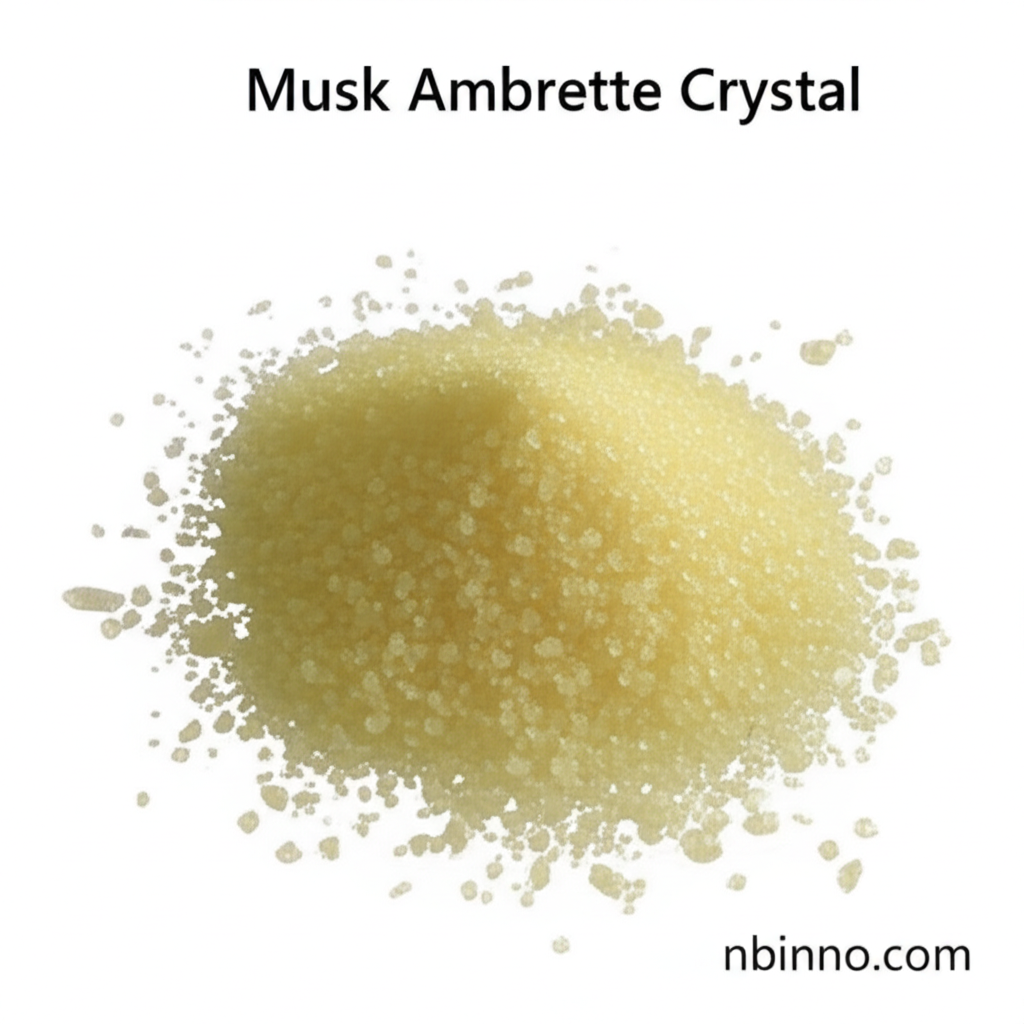Discover Musk Ambrette: Properties and Historical Use in Fragrance
Explore the characteristics and legacy of a key synthetic musk, understanding its role and impact in the world of perfumery.
Get a Quote & SampleProduct Core Value

Musk Ambrette Crystal
Musk Ambrette, identified by CAS number 83-66-9, is a synthetic nitro musk known for its distinctive aroma and its historical use as a powerful fixative in the fragrance industry. While it offers a unique scent profile valuable for recreating vintage perfumes, its use is now restricted due to safety concerns.
- Explore the historical significance of musk ambrette uses in perfume, understanding its role as a fixative. It provided a stable, long-lasting scent base crucial for many classic fragrances.
- Learn about the chemical properties of musk ambrette, including its pale yellowish, whitish yellow, or yellow granular crystal appearance. Its specific melting point of 84-86°C and boiling point are key characteristics.
- Understand the primary applications of musk ambrette, which historically included cosmetic raw materials and detergent raw materials. It was widely incorporated into soaps, detergents, and perfumes.
- Investigate the reasons behind the musk ambrette ban, primarily due to toxicity concerns affecting the nervous system. The International Fragrance Association (IFRA) has recommended against its use in modern formulations.
Key Advantages and Considerations
Exceptional Fixative Properties
Musk Ambrette is renowned for its ability to prolong the scent of other ingredients in a fragrance formulation, serving as a highly effective musk fixative.
Vintage Fragrance Recreation
For those seeking to recreate the authentic scent profiles of vintage perfumes, understanding the musk ambrette chemical properties is essential. Its unique aroma is difficult to replace.
Historical Aromatic Profile
The sweet, heavy floral-musky odor of Musk Ambrette made it a popular choice for decades, contributing a warm and inviting note to many popular scents.
Key Applications
Perfumes
Historically used as a base note and fixative in perfumes, contributing a rich, musky aroma that enhances longevity and complexity.
Soaps & Detergents
Incorporated into daily cleaning products to provide a pleasant, lasting fragrance, demonstrating its versatility in household chemicals.
Cosmetics
Found in cosmetic raw materials, though its use is now heavily regulated due to safety concerns identified by regulatory bodies.
Flavors
While primarily known for fragrance, it has also seen limited use in certain flavor applications, though this is also subject to strict regulations.
